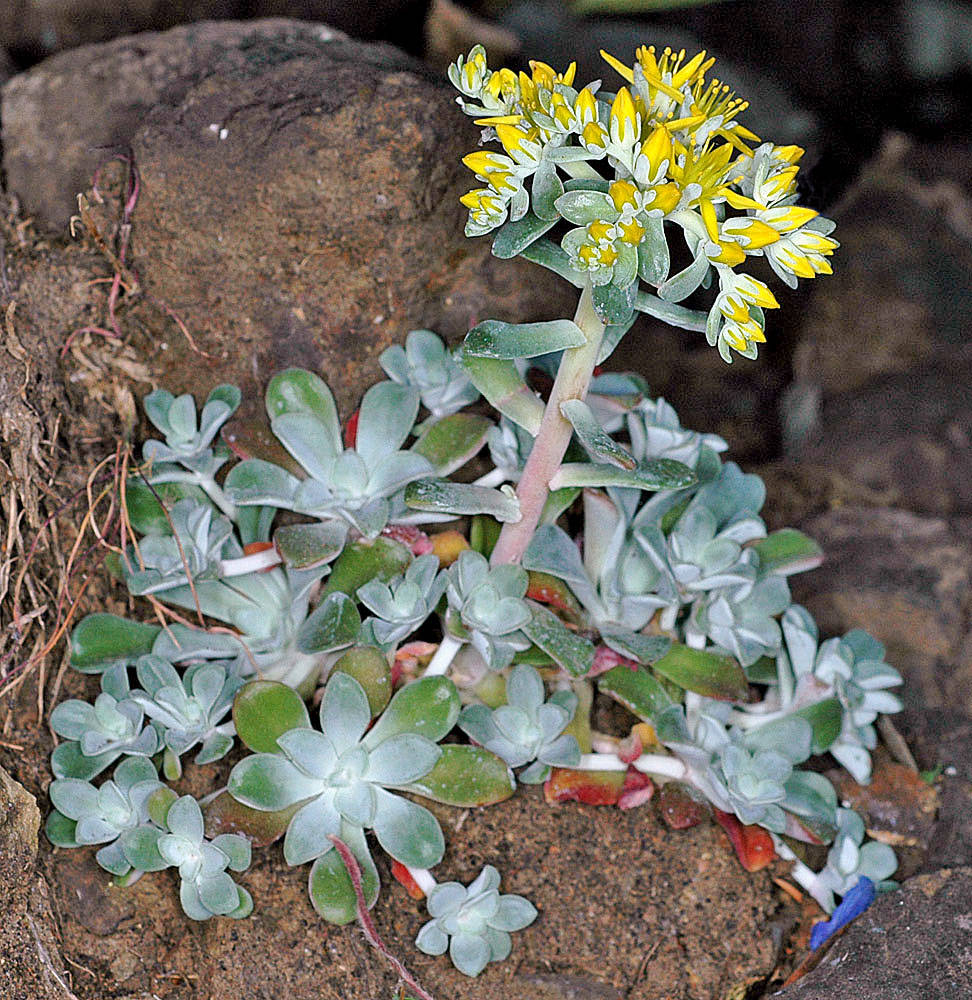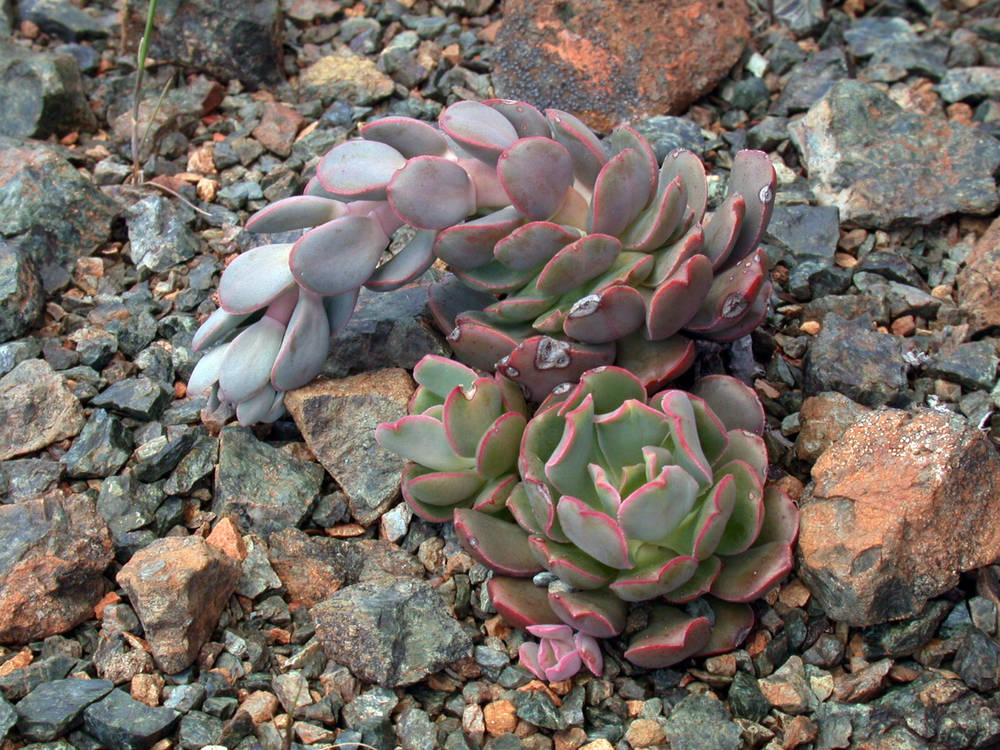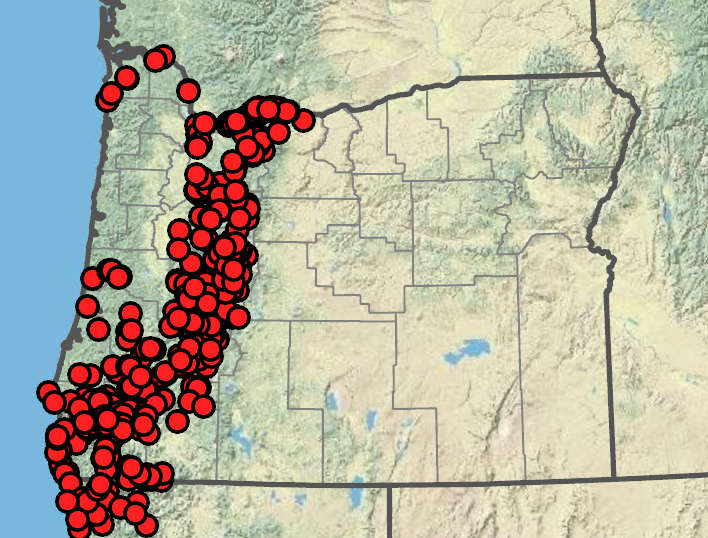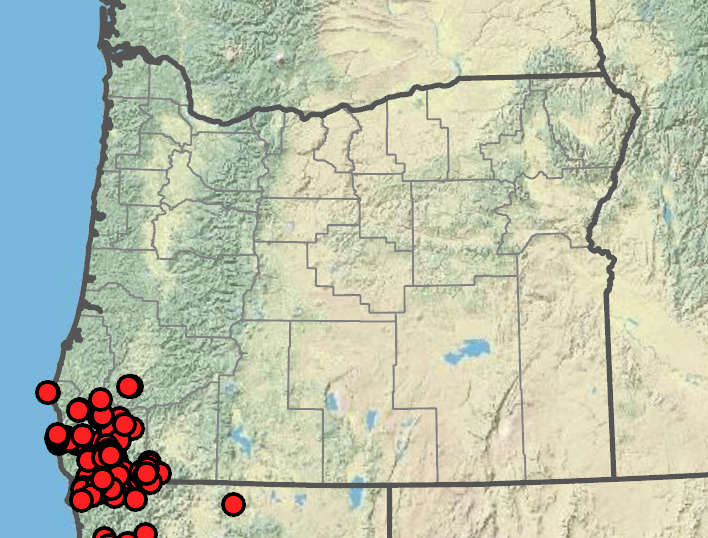Sedum spathulifolium
Sedum laxum
broadleaf stonecrop
roseflower stonecrop
extensively stoloniferous, with dense terminal rosettes.
ascending; much branched, bearing dense rosettes.
erect; simple, 3–14 cm;
stem leaves alternate, spatulate-oblong or elliptic-oblong; widest at or below middle, different from rosette leaves.
erect or decumbent, 10–42 cm;
stem leaves alternate, oblanceolate, elliptic, oblong or suborbicular; broadest near or above middle, auriculate or not, decurrent or not, different from rosette leaves.
rosette leaves spreading, usually nearly parallel to ground, usually forming flat rosettes, spatulate, narrowing to petioles, 7–19 × 4.5–10 mm, 5 × as wide as thick, green or pruinose and white, bases not spurred, not scarious, sometimes muricate or papillose near margins;
tips rounded or truncate;
surfaces usually glaucous.
rosette leaves obovate, spatulate or oblanceolate, subterete to somewhat flattened, 10–50 × (4.5)6–33 mm, green, bases not spurred, not scarious;
tips truncate to rounded or obtuse, notched or not;
surfaces glaucous or not, not pruinose.
cymes with ~30 flowers, 3-branched;
branches forked;
bracts oblong-spatulate or linear.
panicle-like cymes with 12–80 flowers, with 3+ branches;
branches 2-forked;
bracts similar to stem leaves but smaller.
5-parted;
sepals spreading to erect, lanceolate, linear-lanceolate, oblong-ovate or obovate; ~2.5 × 1.5 mm, green to yellow-green;
tips acute or obtuse;
surface glaucous or pruinose;
petals strongly spreading above erect base, linear to oblanceolate, 4.5–9 mm, yellow;
tips acute;
filaments yellow;
anthers yellow.
5-parted;
calyx lobes erect, closely appressed to corolla tube; ovate or lanceolate; (2)2.6–5.1 mm, pale green;
tips acute or subacute;
petals erect or spreading 15–30° from flower axis, 4–11 mm, pink with broad white margins, sometimes almost entirely white; aging red;
tips acuminate, sometimes attenuate;
anthers dark rose red, rarely dark red-orange; aging black.
erect until mature then spreading, fused basally, brown.
erect, brown.
Sedum spathulifolium
Sedum laxum
Rocks, cliffs and road cuts. Flowering Apr–Aug. 0–2400 m. Casc, Col, CR, ECas, Est, Sisk, WV. CA, WA; north to British Columbia. Native.
Sedum spathulifolium is highly variable. If subspecies are recognized, most of our plants are S. spathulifolium ssp. spathulifolium. A coastal form with thick, white-pruinose leaves, short, stout stolons, dense inflorescences and thick, crowded stem leaves can be called S. s. ssp. pruinosum (if it is considered a strictly coastal entity). If it is considered to include strongly glaucous or pruinose plants of the Coast Range that are less dense in growth form, the name S. s. var. minus would be applied. Plants with thin, green leaves, numerous long, slender stolons that tend to grow upwards before growing out, paler flowers, and more spreading follicles can be called S. s. ssp. purdyi, a rare form known only from southern Josephine County, and Del Norte and Siskiyou counties in California.
Western North America. 4 subspecies; 2 subspecies treated in Flora.
Sedum laxum is recognized by its long, narrowly acute to acuminate, usually pink petals. The white petal margins can be broad, and, depending on environmental conditions, the entire petal may be white. Even when petals are white, anthers remain dark red, rarely dark red-orange.
Barbara Wilson, Richard Brainerd, Nick Otting
Barbara Wilson, Richard Brainerd, Nick Otting
- Local floras:
BC,
CA,
OR,
WA
- Local Web sites:
CalFlora,
CalPhotos,
Flora NW,
PNW Herbaria,
Turner Photog.
WildflowerSearch
iNaturalist (observations)
USDA Plants Database
- LBJ Wildflower Center
- SEINet
- Plants of the World Online
- Encyclopedia of Life
- Wikipedia
- Google Image Search





